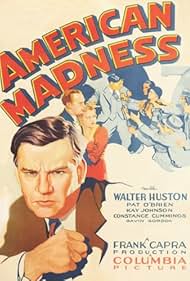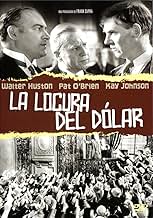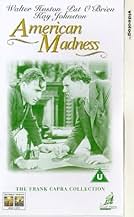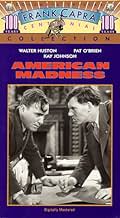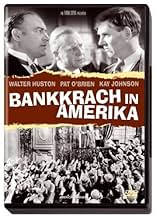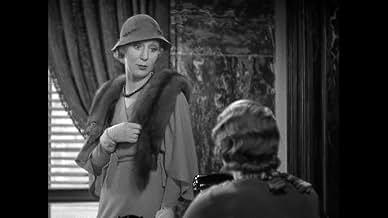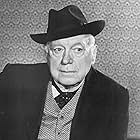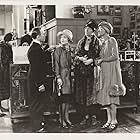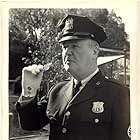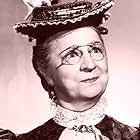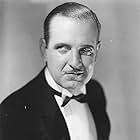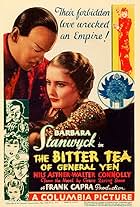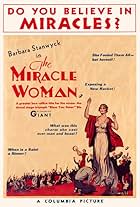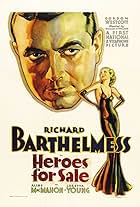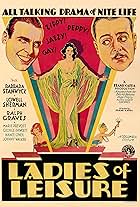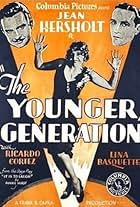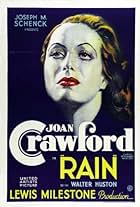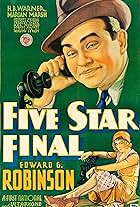Socially-conscious banker Thomas Dickson faces a crisis when his protégé is wrongly accused of robbing the bank, gossip of the robbery starts a bank run, and evidence suggests Dickson's wife... Read allSocially-conscious banker Thomas Dickson faces a crisis when his protégé is wrongly accused of robbing the bank, gossip of the robbery starts a bank run, and evidence suggests Dickson's wife had an affair...all on the same day.Socially-conscious banker Thomas Dickson faces a crisis when his protégé is wrongly accused of robbing the bank, gossip of the robbery starts a bank run, and evidence suggests Dickson's wife had an affair...all on the same day.
- Awards
- 1 nomination
- Inspector
- (as Robert E. O'Conner)
- Sampson
- (uncredited)
- Kelly
- (uncredited)
- O'Brien
- (uncredited)
- Gossip on Phone
- (uncredited)
- Dude Finlay
- (uncredited)
- Depositor
- (unconfirmed)
- (uncredited)
- Mr. Jones
- (uncredited)
- Gossip on Phone
- (uncredited)
- Carter
- (uncredited)
- Oscar
- (uncredited)
- Directors
- Writer
- All cast & crew
- Production, box office & more at IMDbPro
Storyline
Did you know
- TriviaAccording to soundman Edward Bernds: "Allan Dwan started the picture and worked about a week or ten days on it... Dwan made even Walter Huston look bad, and we wondered how long it would take Cohn and Briskin to wake up to the fact. When [Capra] took the picture over, threw out everything that had been shot before, and started over again, I fully realized, for the first time, what directing really was. Scenes that had been dull became lively, performances that had been dead came alive."
- GoofsDuring the robbery scene, a cable can be seen protruding from the guard's trousers.
- Quotes
[last lines]
Thomas Dickson: Matt! I want you both to take the day off, go downtown, get a license, and get married right away.
[Matt starts to protest]
Thomas Dickson: I don't want to hear any more about it. If you don't get married I'm going to fire the both of you. Helen, while you're downtown, you might stop in and make reservations for the bridal suite on the Berengeria, sailing next week.
Matt Brown: Gee, thanks, Mr. Dickson.
- ConnectionsFeatured in Brother Can You Spare a Dime (1975)
To start off Frank Capra is my favorite director because his best films are stories of regular people who have faith in the inherent goodness of the average person.
When I watched American MADNESS, I was surprised to see this 1932 movie is not as dated as you would expect. It moves quickly, has modern characters and dialogue and the drama is balanced with some comedy. The opening scene introduces one of those wonderful telephone operators with a voice that is instantly recognizable and funny at the same time.
American Madness' timely story is about bank president Thomas Dickson played by Walter Huston who has a lending policy that shows great faith in ordinary people but irritates his board of directors, as does his claim that an increased money supply will help end the Great Depression.
Walter Huston's character obviously embodies the wide-eyed hope found in such Capra films as Mr. Deeds Goes to Town and Mr. Smith Goes to Washington, which also explore what it means to be a "little guy" in a world where millionaires and power brokers usually pull the strings. In some respects, American Madness amounts to a rigged argument in favor of Capra's most optimistic views. But along the way it shows his nagging awareness of the American dream's darker, madder side.
The Great Depression started on Oct. 29 of 1929 when the stock market crashed and it spread to almost every country in the world. US unemployment eventually rose to 25%. Bank failures snowballed as desperate bankers called in loans which the borrowers did not have time or money to repay. With future profits looking poor, capital investment and construction slowed or completely ceased. In the face of bad loans and worsening future prospects, the surviving banks became even more conservative in their lending. Banks built up their capital reserves and made fewer loans, which intensified pressures. A vicious cycle developed and the downward spiral accelerated. By 1933 more than 5,000 banks had failed.
American Madness was the first of Frank Capra's "social dramas," anticipating his later work in this sub-genre with Mr. Deeds Goes To Town, Mr. Smith Goes To Washington and Meet John Doe. After WWII his Christmas classic It's A Wonderful Life would reuse two vital scenes first used in this movie. And for fans of the filmmaker's uplifting, socially conscious comedies as It Happened One Night and You Can't Take It With You this film is an early cornerstone of a great career.
But wait, I'm getting ahead of myself. The best of stories work because they have elements of truth in them and the basis for this film came from a banker named Giannini who started a small but successful lending institution in San Francisco called the Bank Of Italy that made loans to working class people not based on collateral, but based on the character of the borrower. Harry Cohen, the head of Columbia Studios that made tonight's movie was one such borrower who went to Mr. Giannini's bank to start his own business.
This story of banking opened in the dark heart of the Great Depression. It was risk taking too and it was not entirely well-received in cities that had seen bank runs in recent months.
But let's talk about what does work in this movie. First, there is the script that is economical and yet gives every character a full personality. Next the actors play real, flesh and blood people. Capra always brought a natural comfort level to his characters making them people we recognize and want to spend time with. Finally there is the crew behind the camera who must have enjoyed their jobs and believed in this director's vision.
There are two parallel stories, Dickson's battle with his board of directors and the personal lives of the bank's employees that lead to events that cripple the bank.
The cinematographer was Capra's favorite, Joseph Walker. Walker and Capra made 22 films together. And I've always appreciated Walker's camera work because it is so smooth, his shots seem to dove-tail together. I hate it when a cameraman tries to bring attention to what he's doing -- jarring you out of the story. Walker sometimes used 2-8 cameras to shoot a scene as it happened to later cut it together so you wouldn't notice the cuts, just smooth transitions.
Let's talk about the life lessons we can take away from these quaint old movies. Not only do we learn a few good moral lessons but I can't think of a better example of the dangers of gossip. The power and poison of gossip can quickly escalate to become a sinkhole of quicksand that swallows even the exaggerators!
Screenwriter Robert Riskin and Capra liked each other's work, and, as a result, Riskin contributed the wisecracking dialogue for Capra's Platinum Blonde. After American Madness future Riskin/Capra collaborations included Lady for a Day (later remade as Pocketful Of Miracles), It Happened One Night (first film to win all five major Oscars), Mr. Deeds Goes To Town (Oscar for Best Director), Lost Horizon and You Can't Take It With You (which won Oscars for Best Picture & Director). Free of their Columbia contracts in 1941, Riskin and Capra formed their own production company to put together Meet John Doe. In later years, Capra would sometimes comment that he'd often have to tone down Riskin's cynicism; Riskin bristled at Capra's tendency to appear to take all the credit.
One last thing in closing, I forgot to mention to you what happened to the Bank Of Italy, they changed their name to Bank Of America and are now one of the largest banks in the world. Well when I learned that, you could have knocked me over with a pin!
- Larry41OnEbay-2
- Apr 22, 2010
- Permalink
- How long is American Madness?Powered by Alexa
Details
- Release date
- Country of origin
- Language
- Also known as
- Faith
- Filming locations
- 453 S Spring St, Los Angeles, California, USA(was Citizens National Bank in 1932)
- Production company
- See more company credits at IMDbPro
- Runtime1 hour 15 minutes
- Color
- Aspect ratio
- 1.37 : 1
Contribute to this page

